This page is not compatible with Internet Explorer.
For security reasons, we recommend that you use an up-to-date browser, such as Microsoft Edge, Google Chrome, Safari, or Mozilla Firefox.
What's New in 2023.3
Discover the Exciting New Capabilities of Our Latest Version (as of September 2023)
Version 2023.3 is now available for download. Benefit from the following innovative features*:
Feature Highlights
Export to Hexagon’s Metrology Reporting
Export to Hexagon’s Metrology Reporting
You can now share inspection results, part information, and PDF reports from our software directly to the Metrology Reporting platform with the click of a button.
With Metrology Reporting, data-driven decision making has never been easier:
- Consolidate disparate reporting tools into one central location.
- Track the real-time status of measured parts, get failure details, and view metrology reports on any device at any time.
- Use centralized data to automate workflows
and reduce labor costs.
Learn more about this simple, intelligent, and accessible cloud‑based reporting and visualization tool here.
This feature is provided in:
VGSTUDIO MAX
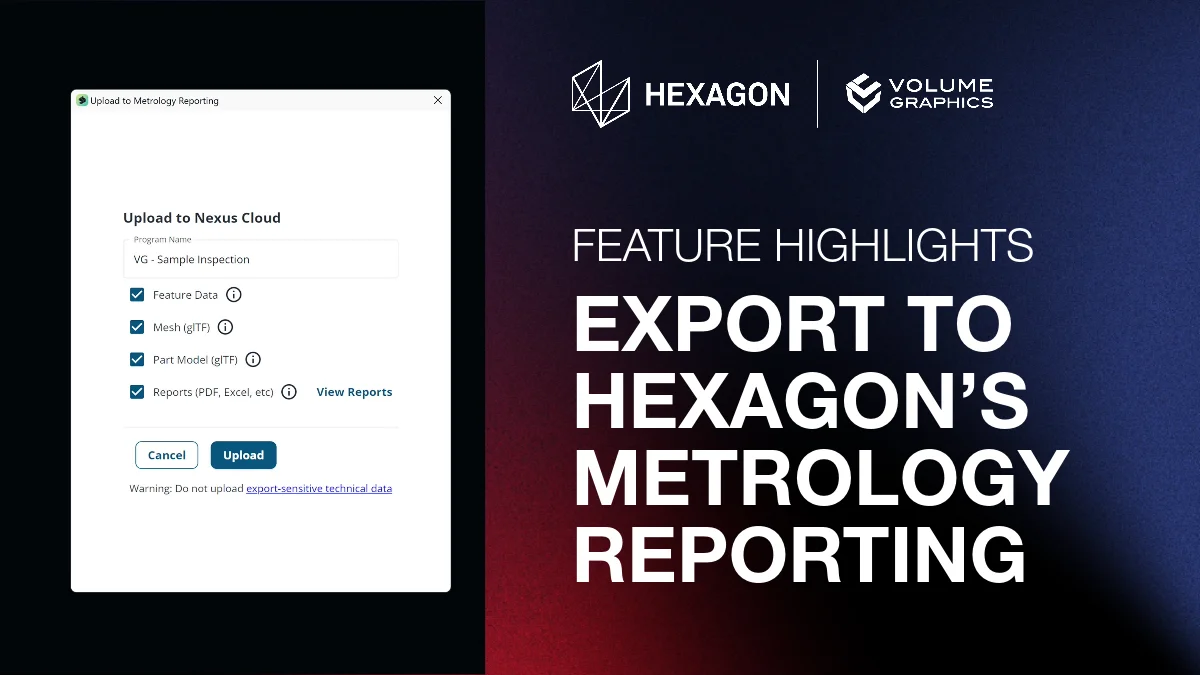
New Options for Handling Particles and Voids in the Advanced Surface Determination
You can now configure up to what size particles and voids should be filtered out of the advanced classic and multi-material surface determination.
The calculation is now done based on the result surface instead of the starting contour to avoid particles and voids being found again during the advanced surface determination within the search distance.
There is a new option for the advanced classic surface determination to create a two-component volume where the voids are separated from the material. This way, you can use the component selection to specify whether or not the surface of voids is to be considered in subsequent analyses (e.g., wall thickness analysis or nominal/actual comparison).
This feature is provided in:
VGSTUDIO MAX
VGinLINE
Enhanced Visualization of Tolerance Zones
Enhanced Visualization of Tolerance Zones
The improved visualization as a volumetric zone makes it even easier to understand the programmed tolerance on the nominal part, as well as the tolerance state of the real object.
The tolerance zones are color-coded in green (OK) or red (not OK) depending on their evaluation state.
Geometric tolerances will now show their tolerance zones when selected in the Scene Tree and when automatic images are reported.
This feature is provided in:
VGSTUDIO MAX
VGSTUDIO
VGMETROLOGY
VGinLINE
More Exciting New Features
Porosity/Inclusion Analysis
The New Go-To Standard for Porosity/Inclusion Analysis: Exact Calculation of the True Gap between Pores
Use our new voxel-based gap calculation to measure precise distances between pore surfaces and accurately determine the smallest gap for subsequent evaluation. This is an important addition to the software’s well-known gap calculation based on circumscribed sphere measurement.
This new feature allows for easier reporting and opens up entirely new possibilities in the porosity/inclusion analysis of CT scans:
- Measure the distance between hundreds of pores faster and more precisely than possible with conventional means like microscopy on metallographic specimen.
- Decrease the potential for false rejects.
The new voxel-based gap is now the default calculation for the porosity/inclusion analysis. Customers who wish to continue using the sphere-based gap calculation may do so by changing the selection before conducting their analysis.
This feature is provided in:
VGSTUDIO MAX
VGinLINE
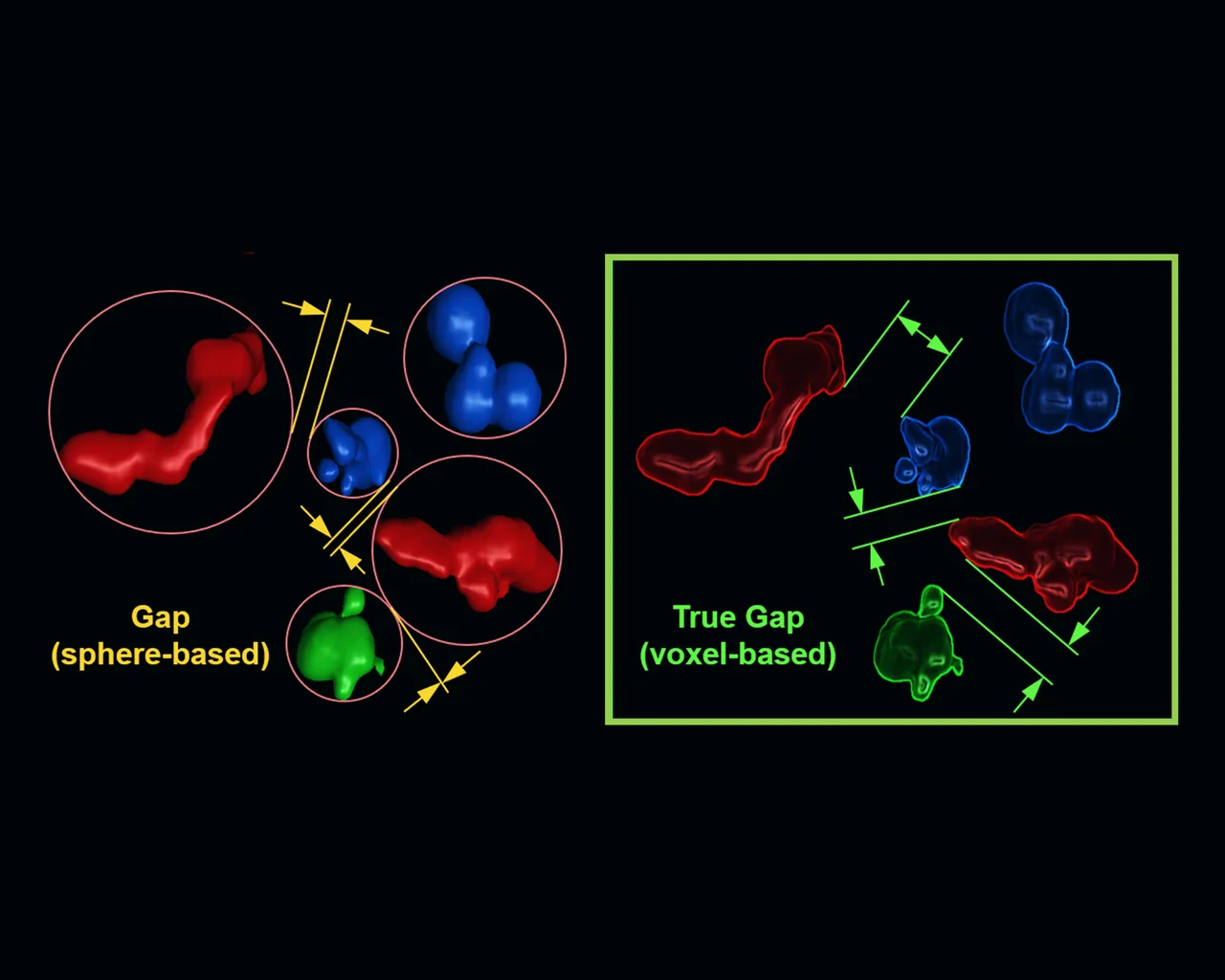
Reporting and Traceability
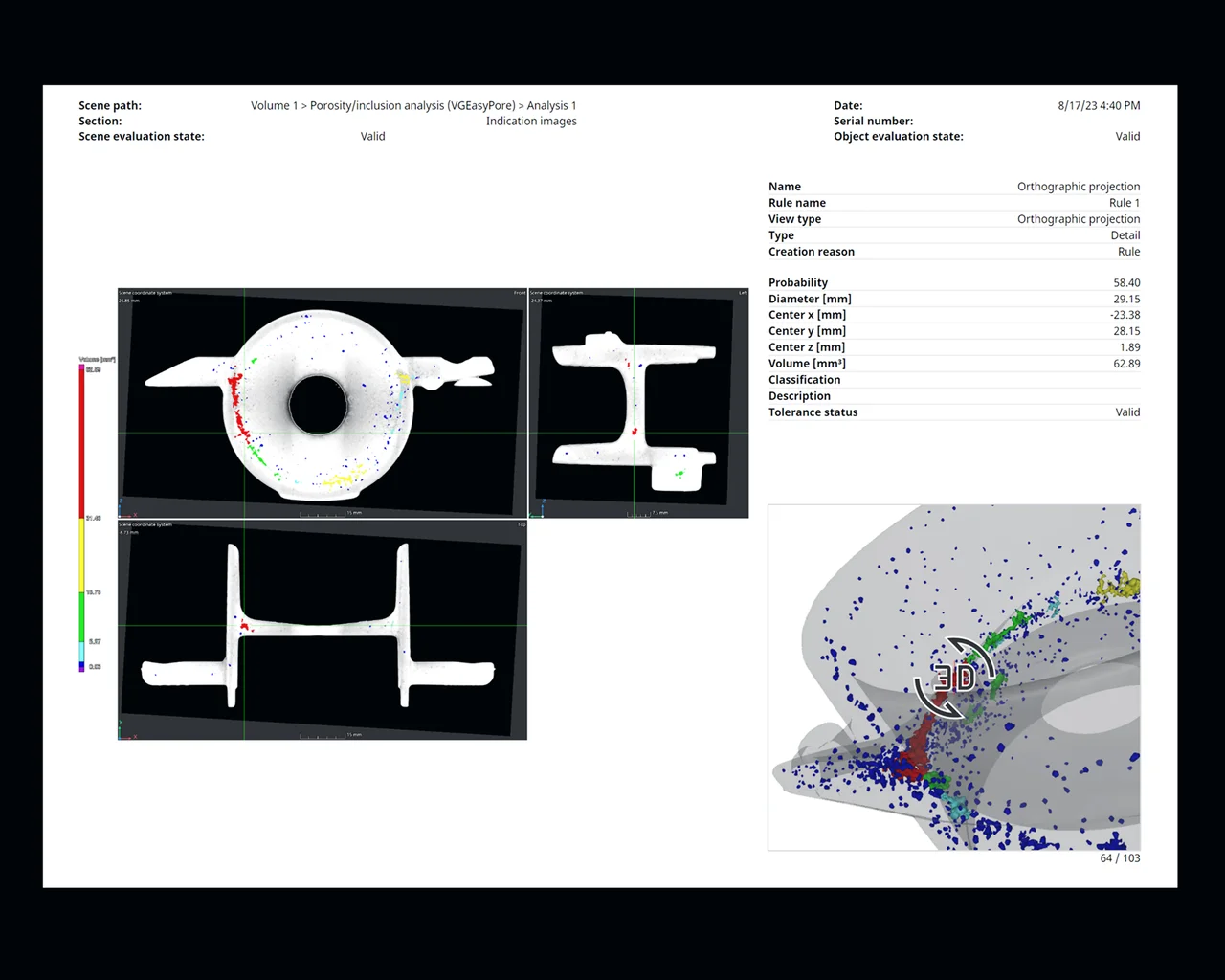
Make Better Quality Decisions with Interactive 3D Images in Reporting
The new interactive indication images in 3D for porosity analyses provide valuable additional context to the 2D indication images, making it much easier to see where exactly in the part an indication is located. This allows you to more accurately gauge the effect the indication might have on the part's quality.
This feature is provided in:
VGSTUDIO MAX
VGSTUDIO
VGMETROLOGY
VGinLINE
Customizable Report Fonts
You can now adjust the font size for most reporting elements, providing a welcome layer of flexibility when customizing your report layouts and enabling you to easily highlight important information, e.g., part serial numbers or evaluation states.
This feature is provided in:
VGSTUDIO MAX
VGSTUDIO
VGMETROLOGY
VGinLINE
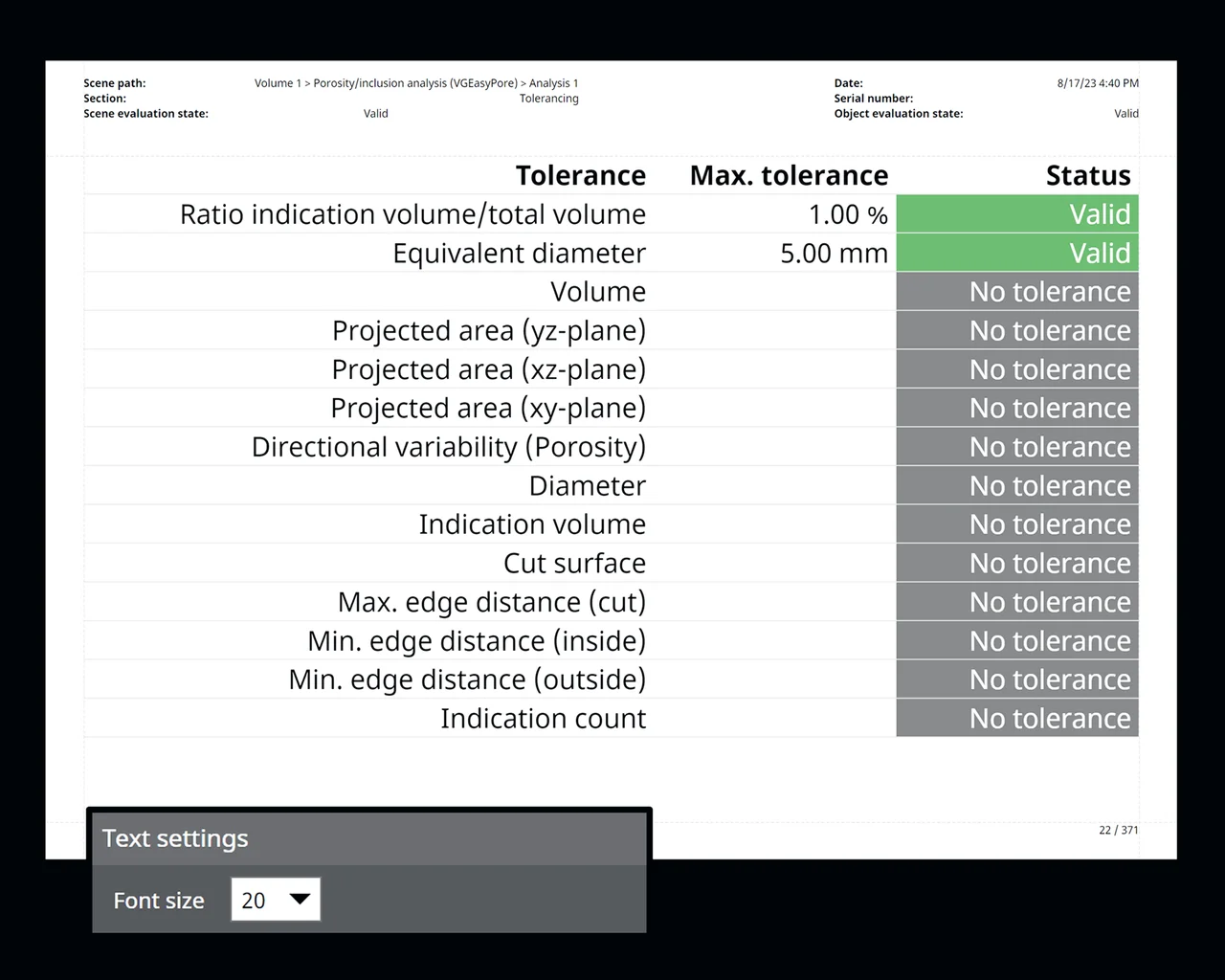
Easier Interaction with 3D Content in Reports
It’s now easy to see which parts of a report represent interactive 3D content. Gone are the days of any accidental zooming of viewports when scrolling through reports. The improved camera makes it much simpler to focus the 3D views on relevant areas of the reported part.
This feature is provided in:
VGSTUDIO MAX
VGSTUDIO
VGMETROLOGY
VGinLINE
Customizable Report Images
We now support .svg, .gif, and .jpg images, making it easier to add custom images to reports without needing to convert them first. Custom images also support animations that might be in .svg or .gif files, extending the way reports can be customized.
This feature is provided in:
VGSTUDIO MAX
VGSTUDIO
VGMETROLOGY
VGinLINE
Coordinate Measurement
Usage of Contours as Final Volume Surfaces
The new fixed contours approach (available with the Coordinate Measurement Module) allows you to specify one or several contours (which can be ROIs, meshes, CAD models, or the surfaces of other volumes) and directly convert them into a volume surface. Each contour will be converted to a separate volume component. Should components overlap, subsequently specified components will replace the ones previously created.
This feature is provided in:
VGSTUDIO MAX
VGinLINE

Automated Update of Dependent Objects
This new option allows you to automatically update all of an element’s dependent objects when editing it. Simply activate this option in your preferences and enjoy no longer having to manually trigger updates.
This feature is provided in:
VGSTUDIO MAX
VGMETROLOGY
Paint & Segment
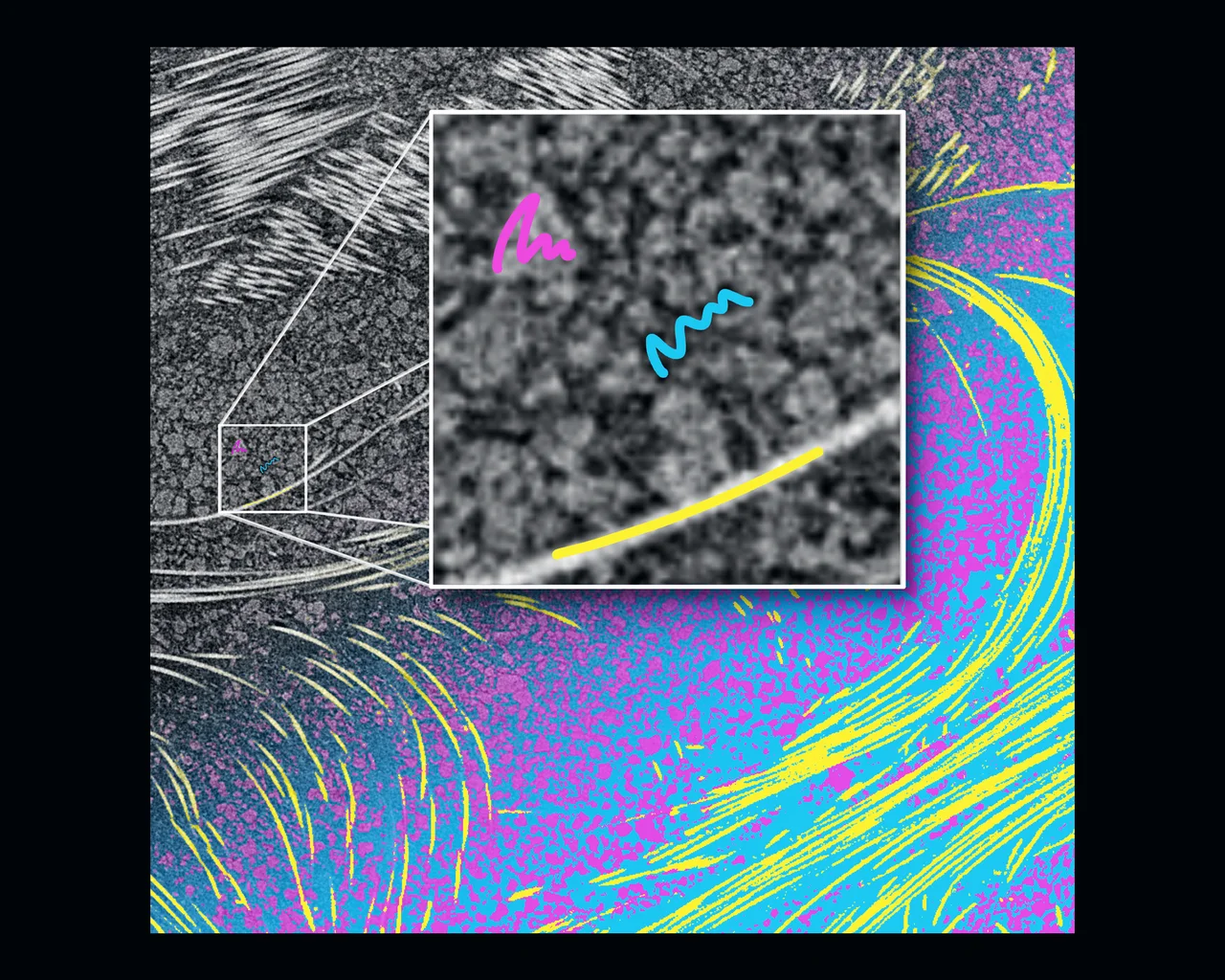
Paint & Segment Labeling on Extracted ROIs
Speed up your workflows and train models more quickly by using extracted ROIs rather than the entire volume.
To improve an existing segmentation locally, quickly train and apply a model for a subset of the volume and merge it with the original one.
This feature is provided in:
VGSTUDIO MAX
Enhancements for ROIs
Create ROI Intersections Directly in Dialog Box
Enjoy a more streamlined process and fewer mouse clicks thanks to the new ability to create ROI intersections directly in the ROI creation dialog box.
This feature is provided in:
VGSTUDIO MAX
Reconstruction
Improved Misalignment Correction for CT Reconstruction
In our new semi-automated workflow, you can now easily auto-optimize the determination of the ideal misalignment correction.
This feature is provided in:
VGSTUDIO MAX
VGSTUDIO
*Depending on the platform, there are differences in the range of functions for different operating systems. See our continuously updated Product Information page for details.
Want to know More?
Just send us an e-mail or give us a call and we'll be happy to provide quotes for our latest version.
Sales enquiries:
sales@volumegraphics.com
VGSTUDIO MAX Upgrade Training
The 1-day upgrade training course is designed for users with several years of experience in working with VGSTUDIO MAX who are interested in new functionalities of the software.
Contact us for your upgrade Training:
Phone: +49 6221 73920 810
academy@volumegraphics.com

